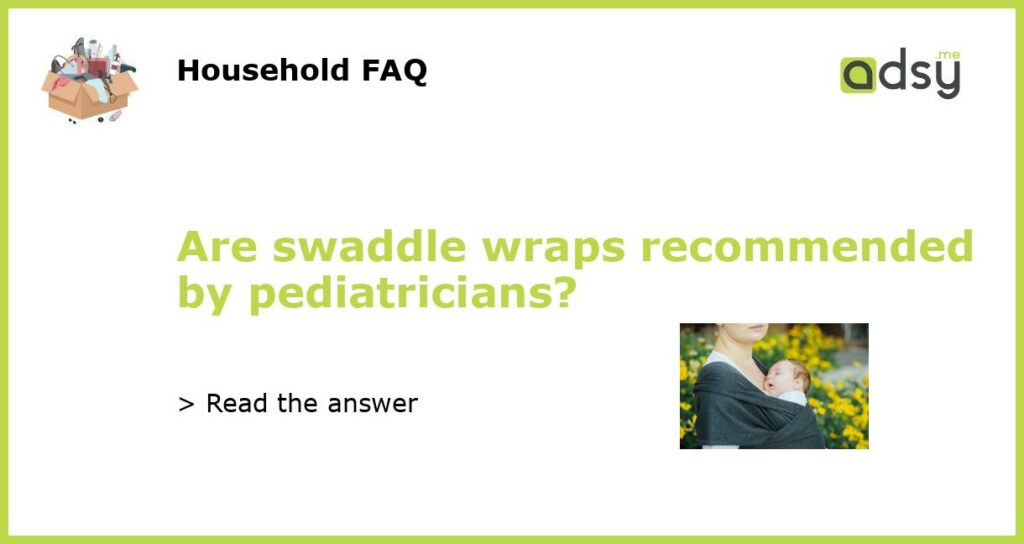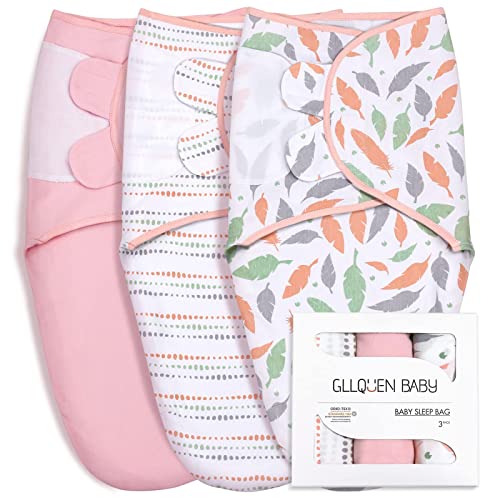Swaddle wraps and their benefits for newborns
Swaddle wraps have become increasingly popular among new parents as a way to soothe and comfort their newborns. These specially-designed blankets provide a cozy and secure environment for babies by mimicking the feeling of being in the womb. But are swaddle wraps actually recommended by pediatricians? Let’s explore the benefits and potential concerns associated with swaddle wraps.
The benefits of swaddle wraps
Swaddle wraps offer several benefits for newborns that can contribute to their overall well-being:
1. Sleep promotion: Many pediatricians believe swaddle wraps help promote better sleep by providing a comforting and secure environment for babies. The snug fit of the wrap can help prevent the startle reflex, allowing babies to sleep longer and more peacefully.
2. Soothing effect: The gentle pressure applied by a swaddle wrap can have a calming effect on babies, helping them feel safe and secure. This can be particularly helpful for infants who have difficulty settling down or staying asleep.
3. Reduced risk of SIDS: Some studies suggest that swaddling can help reduce the risk of sudden infant death syndrome (SIDS) when done correctly. By keeping babies on their backs and avoiding loose bedding, swaddle wraps can provide a safe sleep environment for newborns.
Pediatrician recommendations
The recommendation for swaddle wraps varies among pediatricians and healthcare professionals. While many acknowledge the benefits mentioned above, some caution against using swaddle wraps due to potential risks:
1. Hip dysplasia: Improper swaddling techniques or using swaddle wraps that restrict leg movement can increase the risk of hip dysplasia, a condition where the hip joint is not properly aligned. Pediatricians recommend using swaddle wraps that allow for proper hip development and movement.
2. Overheating: Swaddle wraps can increase body temperature, leading to overheating in some cases. This can be dangerous for newborns as it increases the risk of SIDS. It is important to monitor the room temperature and ensure the baby is not overdressed when using a swaddle wrap.
3. Age and development: Pediatricians often recommend discontinuing swaddling once a baby starts to show signs of rolling over or has outgrown the wrap’s size. When babies reach this stage, being confined by a swaddle wrap can pose a safety risk.
Tips for safe swaddling
If you decide to use swaddle wraps for your newborn, it is important to follow these tips to ensure their safety:
1. Choose the right size: Select a swaddle wrap that is appropriate for your baby’s size and age. Avoid using swaddle wraps that are too tight or restrictive.
2. Allow for natural leg movement: Ensure the swaddle wrap allows your baby’s legs to bend and move freely to reduce the risk of hip dysplasia.
3. Monitor body temperature: Keep an eye on your baby’s body temperature to prevent overheating. Dress them in light, breathable clothing underneath the swaddle wrap and keep the room temperature comfortable.
4. Discontinue swaddling when appropriate: As your baby grows and develops, monitor their ability to roll over. Once they show signs of rolling over or have outgrown the swaddle wrap size, transition them to a different sleep arrangement.
Consult with a healthcare professional
While swaddle wraps can provide comfort and sleep benefits for newborns, it is always best to consult with a pediatrician or healthcare professional for personalized recommendations. They can assess your baby’s specific needs and advise on the safest and most appropriate swaddling practices.






